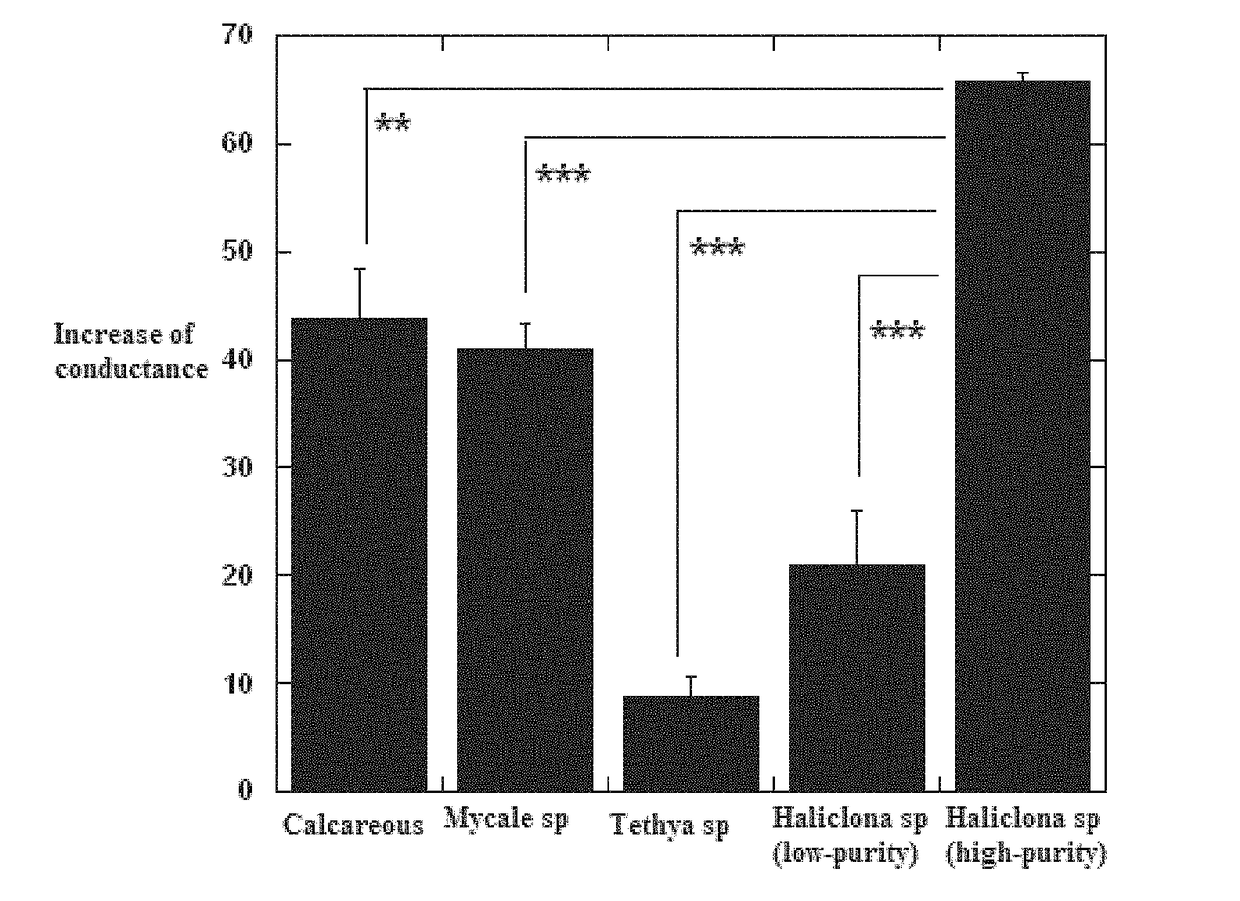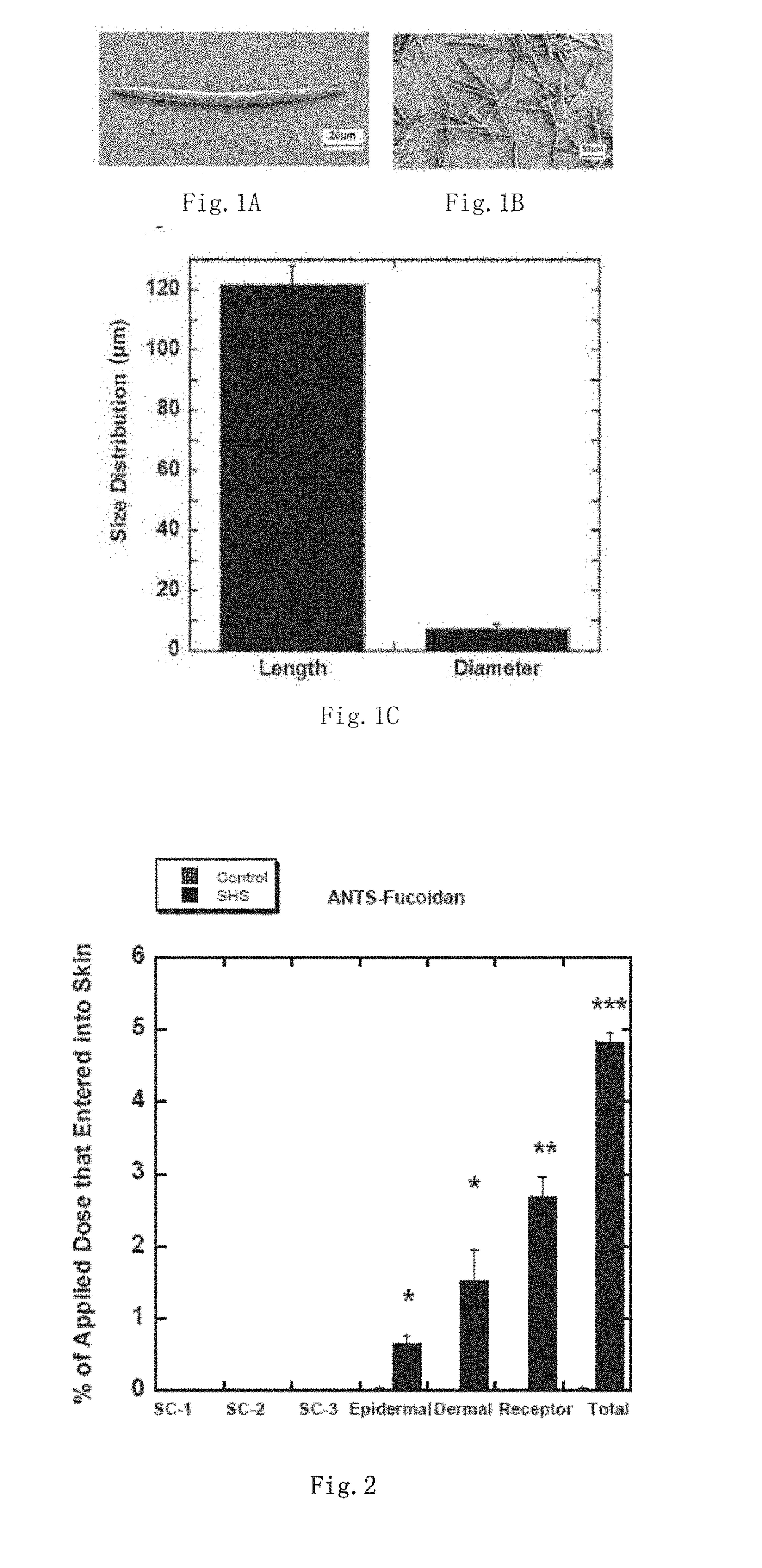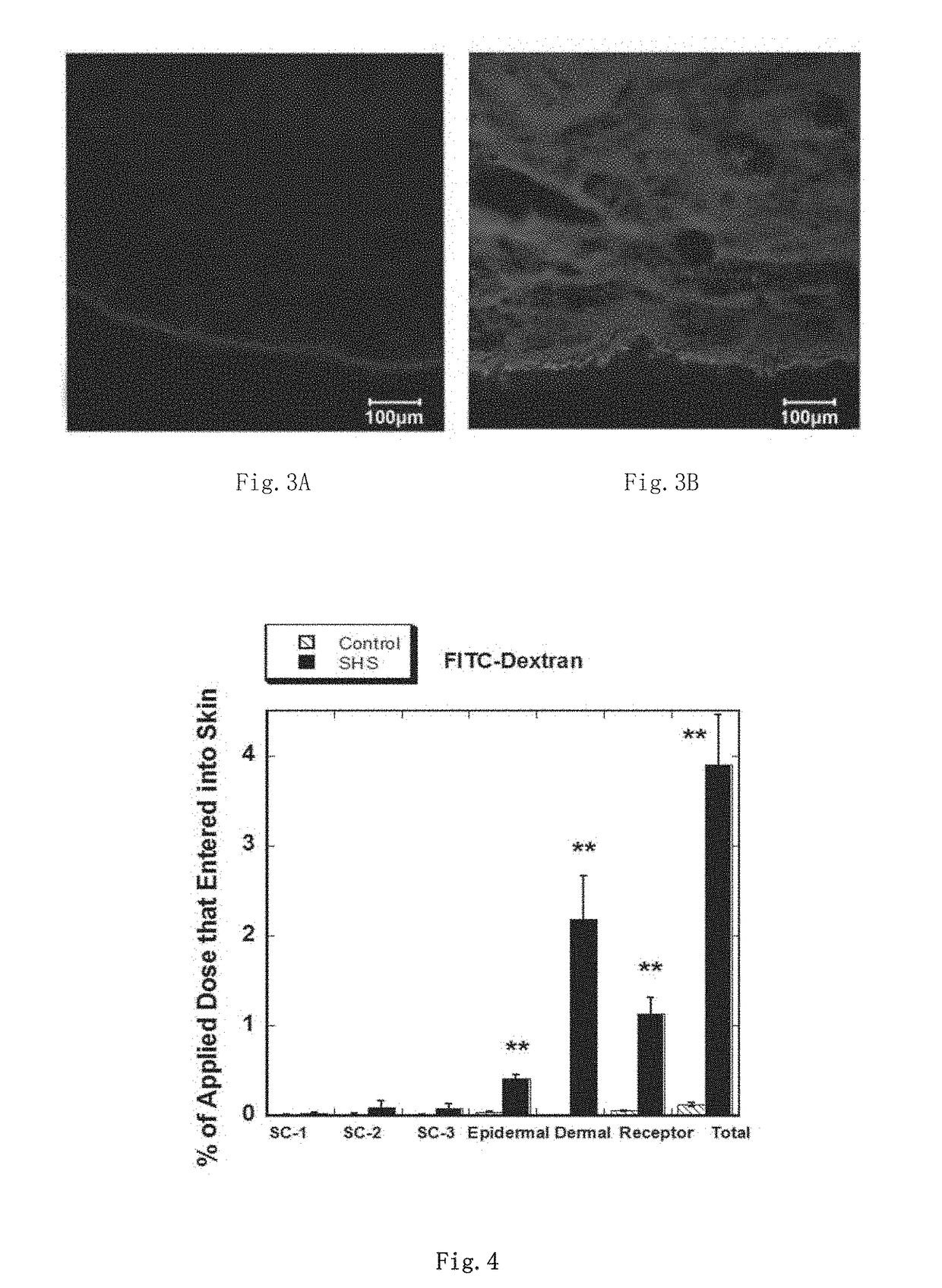Skin penetration enhancing method and its penetration enhancer
a skin and skin technology, applied in the field of skin penetration enhancement materials, can solve the problems of limited penetration enhancing effect of chemical penetration enhancement techniques, difficulty in delivering various, skin problems, etc., and achieve the effects of stimulating the proliferation of keratinocytes, increasing the percutaneous absorption of cosmetic active ingredients, and increasing the intensity of massag
- Summary
- Abstract
- Description
- Claims
- Application Information
AI Technical Summary
Benefits of technology
Problems solved by technology
Method used
Image
Examples
embodiment 1
[0039]Fresh porcine skin was punched into a 40 mm diameter disc, subcutaneous adipose tissue was removed and the hair was to be shaved to no more than 2 mm The porcine skin was rinsed with clean water and mounted onto a Franz diffusion cell and all air bubbles between the underside of the skin (dermis) and the buffer in the receptor were completely removed. Add 1 mL of phosphate buffer to the dosing part (15 mm in diameter). The conductivity of the porcine skin will be tested with a waveform generator and a multimeter by applying 100 mV, 100 Hz alternating current. If the current through the porcine skin is less than 5 μA, it demonstrated the skin barrier function was in good condition, and the skin was qualified for experiments. The phosphate buffer was aspirated and 100 μL of phosphate buffer containing 10 mg of sponge spicules was added to the dosing part. The control group was applied with phosphate buffer without sponge spicule. With a mini-massage device or a finger, massaging...
embodiment 2
[0042]porcine skin was treated as in Embodiment 1, after the conductivity was measured and the buffer removed, 150 μL of a solution containing 1.5 mg of FITC-Dextran (average molecular weight 10 kDa) and 10 mg of sponge spicule was applied, while the control group was without sponge spicule. Massaging the applied skin with a mini massage device or by manual massage for 2 min. Incubated it in percutaneous pool for 16 h. The same two methods were used to qualitatively and quantitatively detect the transdermal amount of FITC-Dextran, respectively. The confocal microscopic observation results are similar to those in Embodiment 1. Sponge spicules can create numerous micropores on the skin, and the fluorescence intensities of the stratum corneum, epidermis, and dermis of the experimental group were significantly higher than those of the control group. Quantitative results showed that FITC-Dextran that entered the epidermis of the experimental group skin was 17.3 times that of the control ...
embodiment 3
in Penetration Effects from Species and Morphological Differences
[0043]FIGS. 6A-6B show the high purity and low purity of the sponge spicules derived from the Haliclona sp. used in the present invention, and the morphology of the sponge spicules derived from the the calcareous sponge. the Tethya sp. and the Mycale sp. As can be seen from the figure, the high-purity (FIG. 6A) and the low-purity (FIG. 6B) sponge spicule derived from the Haliclona sp. were both demonstrated as oxeas, and the high-purity sponge spicules derived from the Haliclona sp. has a more uniform shape and less impurities. The sponge spicules derived from the calcareous sponge. (FIG. 6C) has a tricuspid shape; the sponges picules derived from the Tethya sp. (FIG. 6D) has a spherical shape; and the sponge spicules derived from the Mycale sp. (FIG. 6E) has a single sharp shape.
[0044]The different types of sponge spicules from different species were used to investigate the effect of promoting penetration. The results...
PUM
 Login to View More
Login to View More Abstract
Description
Claims
Application Information
 Login to View More
Login to View More - Generate Ideas
- Intellectual Property
- Life Sciences
- Materials
- Tech Scout
- Unparalleled Data Quality
- Higher Quality Content
- 60% Fewer Hallucinations
Browse by: Latest US Patents, China's latest patents, Technical Efficacy Thesaurus, Application Domain, Technology Topic, Popular Technical Reports.
© 2025 PatSnap. All rights reserved.Legal|Privacy policy|Modern Slavery Act Transparency Statement|Sitemap|About US| Contact US: help@patsnap.com



